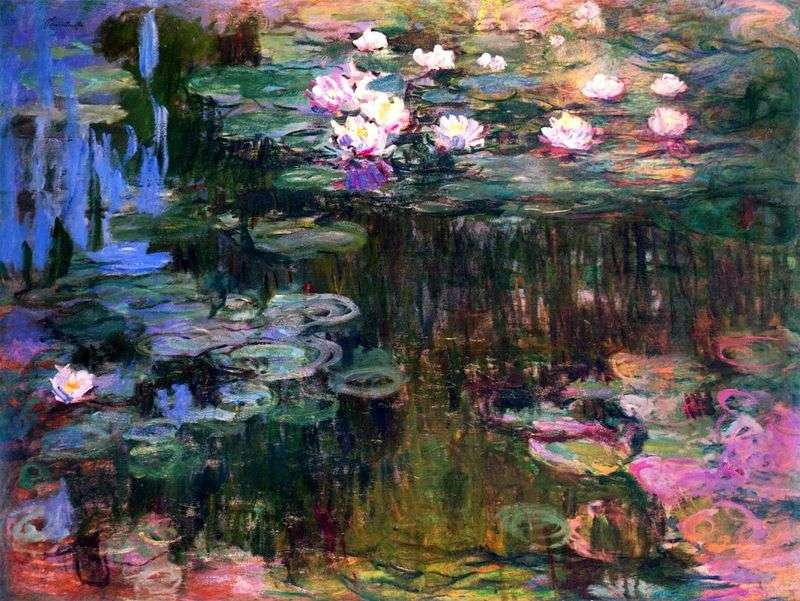
A pond with water lilies near the house of Claude Monet in Giverny, north-west of Paris, became the main motive of the artist’s later paintings. The canvas, showing the surface of the pond, becomes the world in itself, inspiring a sense of immersion in nature. Observations of the change in the structure of light on the surface of the water prompted Claude Monet to abstract sketches.
The paintings were not fully appreciated during the life of Monet, and when they were revised in the 1950s by some art critics, some critics considered him a predecessor of abstract expressionism. In his quest to display the right amount of light and darkness, Monet always worked on several canvases at once and violently watched the change in lighting. He painted intently, ignoring all current trends, despite the surprise of his contemporaries.
In the last decades of life for Monet, his favorite water garden in Giverny was the subject of obsessive and obsessive study. He painted the same landscape about 250 times throughout 1900 and before his death. In the end, the pond became his only subject for creativity. He began building a water garden as soon as he moved to Giverny, and petitioned the local authorities to divert water from a nearby river. As a result, the landscape was Monet’s invention entirely, and he used it as his creative focus and inspiration.
The surface of the water uniquely reflected the light and atmosphere of the environment in the works of Monet in Javerny. The sky disappeared from the painting, the magnificent leaf covered the top of the canvas, right up to the horizon, and the decorative arch of the bridge filled the space. Our attention is focused on the picture itself and keeps the emphasis on it, and not on what is presented in the picture in detail. In later works, Monet ponds and lilies more and more fill the space of the canvas, and the surface of the water is dotted with flowers.
Floating water lily leaves and their reflections in water blur the distinction between real objects and their mirror image using light. Monet was always interested in thinking, watching the fragmented forms in their natural expression, which he expressed with his brush on the canvas. “The object is not important to me; I want to reproduce what exists between the object and me.” Toward the end of his life, as a result of his intense efforts at the right light and shadow, he removed the subject matter from his paintings, as a result of which abstract art was born.

 (2 votes, average: 4.50 out of 5)
(2 votes, average: 4.50 out of 5)